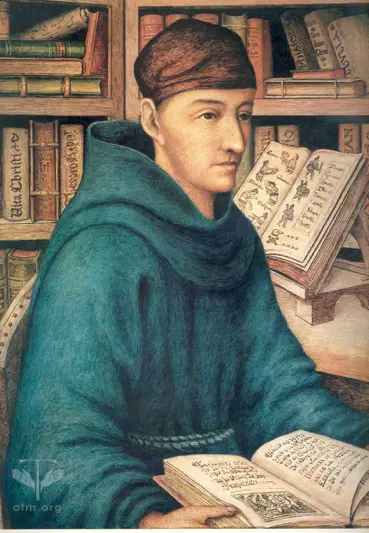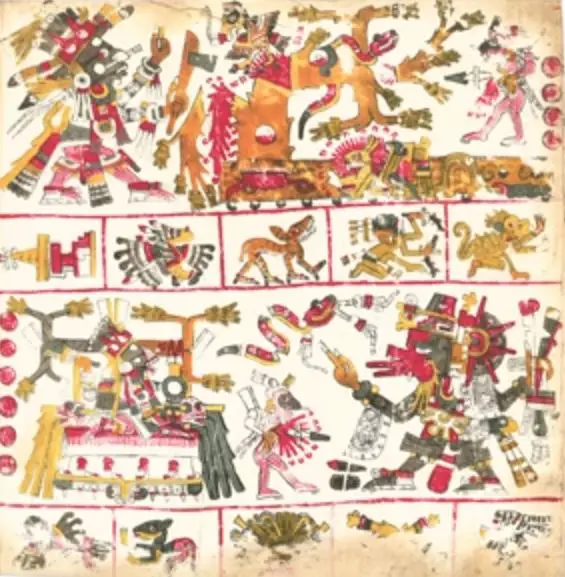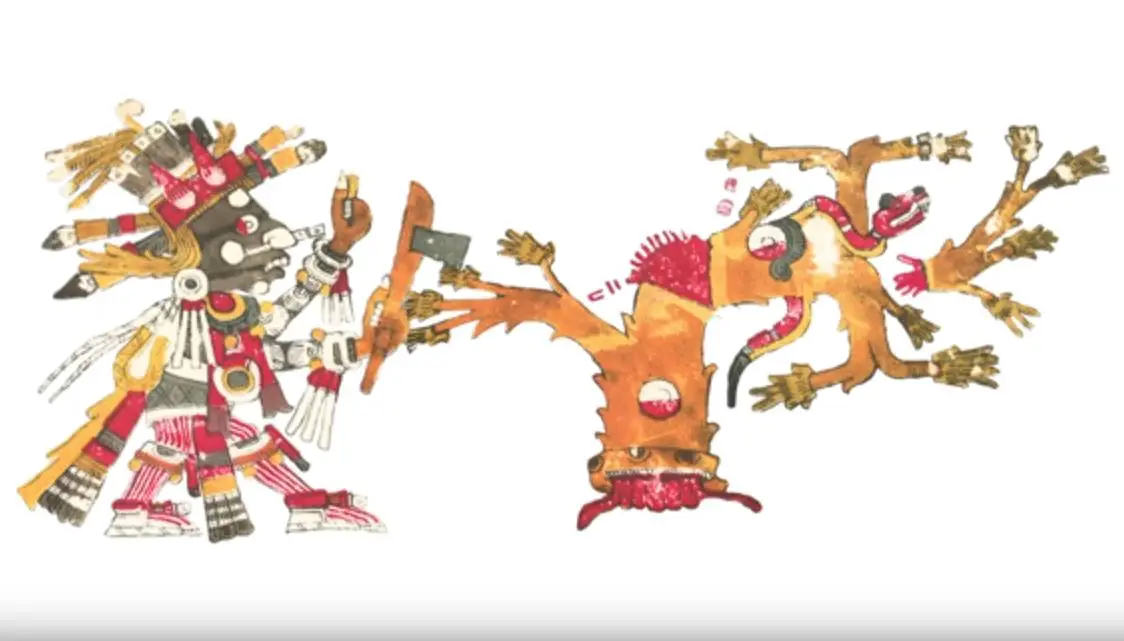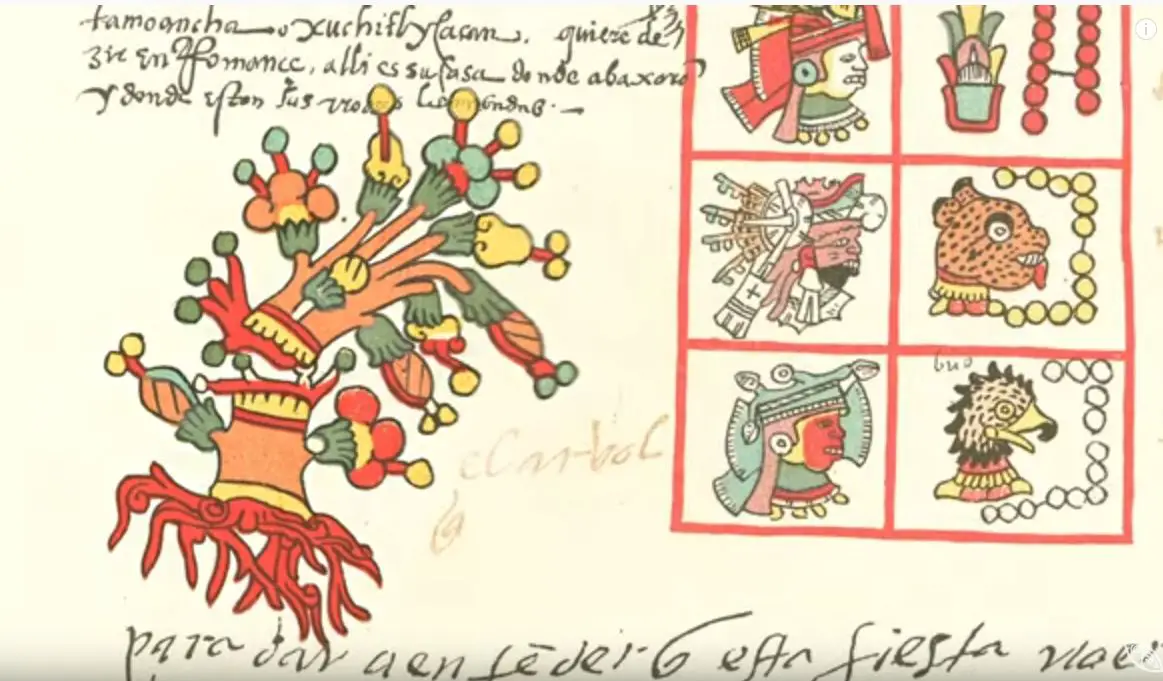Podcast: Play in new window | Download
Subscribe: Apple Podcasts | RSS
 The Spanish had several tasks after their conquest of the Aztecs. One of these tasks was conversion of the natives to Christianity. As the new power in Mexico, the Spanish needed to impose a new order on the many indigenous peoples in their newly conquered territories rather quickly. It was a race for them to understand their new subjects so that they could rule over them with the least amount of conflict. While trying to comprehend the religious beliefs of the Aztecs, many members of the Spanish clergy began looking for parallels and similarities between the beliefs of the old system and the beliefs of the new. The more comparisons the Europeans could draw between the ancient Mexican religions and Christianity, the easier it would be for the Indians to accept the new faith, it was so thought. The Spanish referred to the Aztec codices, or illustrated ancient books, to help them understand the Aztec Universe, with the help of learned indigenous assistants. In several of the codex books and in many of the oral histories, the Spanish kept coming across the word, “Tamoanchan.” Members of the clergy and early scholars thought it translated to “Paradise” and even tried to tie it in with the Garden of Eden. Others believed that it was a mythical location or lost city from which all civilization in ancient Mexico came from. Researchers today still debate all of this. Even the name, “Tamoanchan” is still a mystery. At the time of the Conquest, the Spanish asked around and got several different interpretations for the word from people who spoke different languages. In the Spanish documents at the time, “Tamoanchan” is interpreted to mean “We go down to our home,” or “Place of the misty sky,” or “Place where the gods are born.” Modern speakers of the ancient language of Nahuatl – who number over a million in the year 2020 – scratch their heads when trying to come up with a meaning for the word “Tamoanchan.” Scholars have long since believed that the word is most likely not Aztec in origin. Some of the ideas and imagery associated with Tamoanchan indicate that the word may have its beginnings in Huastec, a northern offshoot of the Maya. Some scholars disagree with that and theorize that the word is a holdover from a long-dead indigenous language and that the word “Tamoanchan” dates back thousands of years in ancient Mexico, perhaps to the very origins of Mesoamerican civilization.
The Spanish had several tasks after their conquest of the Aztecs. One of these tasks was conversion of the natives to Christianity. As the new power in Mexico, the Spanish needed to impose a new order on the many indigenous peoples in their newly conquered territories rather quickly. It was a race for them to understand their new subjects so that they could rule over them with the least amount of conflict. While trying to comprehend the religious beliefs of the Aztecs, many members of the Spanish clergy began looking for parallels and similarities between the beliefs of the old system and the beliefs of the new. The more comparisons the Europeans could draw between the ancient Mexican religions and Christianity, the easier it would be for the Indians to accept the new faith, it was so thought. The Spanish referred to the Aztec codices, or illustrated ancient books, to help them understand the Aztec Universe, with the help of learned indigenous assistants. In several of the codex books and in many of the oral histories, the Spanish kept coming across the word, “Tamoanchan.” Members of the clergy and early scholars thought it translated to “Paradise” and even tried to tie it in with the Garden of Eden. Others believed that it was a mythical location or lost city from which all civilization in ancient Mexico came from. Researchers today still debate all of this. Even the name, “Tamoanchan” is still a mystery. At the time of the Conquest, the Spanish asked around and got several different interpretations for the word from people who spoke different languages. In the Spanish documents at the time, “Tamoanchan” is interpreted to mean “We go down to our home,” or “Place of the misty sky,” or “Place where the gods are born.” Modern speakers of the ancient language of Nahuatl – who number over a million in the year 2020 – scratch their heads when trying to come up with a meaning for the word “Tamoanchan.” Scholars have long since believed that the word is most likely not Aztec in origin. Some of the ideas and imagery associated with Tamoanchan indicate that the word may have its beginnings in Huastec, a northern offshoot of the Maya. Some scholars disagree with that and theorize that the word is a holdover from a long-dead indigenous language and that the word “Tamoanchan” dates back thousands of years in ancient Mexico, perhaps to the very origins of Mesoamerican civilization.
 The outside world first heard of this long-lost Mexican paradise through the Franciscan missionary Bernardino de Sahagún, who went to New Spain in 1529, less than 10 years after conquistador Hernán Cortés entered the Aztec capital for the first time as an honored guest of Emperor Montezuma. As “boots on the ground” in the early days of the Spanish arrival in Mexico, Sahagún is a valuable resource for all things Aztec while that civilization was still relatively intact. In his book, Historia general de las cosas de la Nueva España—in English, General History of the Things of New Spain— Sahagún refers to many of the ancient Aztec codices. In the Codex Telleriano-Remensis, now in the possession of The National Library of France in Paris, we see an early reference to the idea of Tamoanchan as an Aztec paradise. The codex was created by Aztec scribes sometime in the first few decades of the Spanish Conquest. It is done on European paper instead of the traditional ancient Mexican bark paper or animal hides and amid the Aztec illustrations and glyphs are notes written in Spanish. The codex was probably created by an Aztec author or authors on the request of a member of the Spanish clergy or ruling class or it could have been a copy of an earlier work. The Codex Telleriano-Remensis is divided into three sections. The first two sections describe the ancient Mexican solar and lunar calendars and the third part is a history, including royal lineages and reports of major earthquakes and eclipses. The third part is stylistically different from the first two which leads researchers to believe that it was created by a different person. In any case, throughout the codex are notes written in Spanish seeking to translate or explain what these Aztec authors were trying to say. In one part of the codex we see an image of a female god, in a pose of shame, holding a bowl of what appears to be garbage or human excrement. The Spanish note above the drawing of the bowl simply says, “mierda.” The eyes of the goddess are blacked out and we see from the notes that the name of this female deity is Ixnextli, which translates from Nahuatl to English to mean, “Eyes with Ashes.” The scribbling in Spanish below the illustration of the ancient goddess says this, translated into English:
The outside world first heard of this long-lost Mexican paradise through the Franciscan missionary Bernardino de Sahagún, who went to New Spain in 1529, less than 10 years after conquistador Hernán Cortés entered the Aztec capital for the first time as an honored guest of Emperor Montezuma. As “boots on the ground” in the early days of the Spanish arrival in Mexico, Sahagún is a valuable resource for all things Aztec while that civilization was still relatively intact. In his book, Historia general de las cosas de la Nueva España—in English, General History of the Things of New Spain— Sahagún refers to many of the ancient Aztec codices. In the Codex Telleriano-Remensis, now in the possession of The National Library of France in Paris, we see an early reference to the idea of Tamoanchan as an Aztec paradise. The codex was created by Aztec scribes sometime in the first few decades of the Spanish Conquest. It is done on European paper instead of the traditional ancient Mexican bark paper or animal hides and amid the Aztec illustrations and glyphs are notes written in Spanish. The codex was probably created by an Aztec author or authors on the request of a member of the Spanish clergy or ruling class or it could have been a copy of an earlier work. The Codex Telleriano-Remensis is divided into three sections. The first two sections describe the ancient Mexican solar and lunar calendars and the third part is a history, including royal lineages and reports of major earthquakes and eclipses. The third part is stylistically different from the first two which leads researchers to believe that it was created by a different person. In any case, throughout the codex are notes written in Spanish seeking to translate or explain what these Aztec authors were trying to say. In one part of the codex we see an image of a female god, in a pose of shame, holding a bowl of what appears to be garbage or human excrement. The Spanish note above the drawing of the bowl simply says, “mierda.” The eyes of the goddess are blacked out and we see from the notes that the name of this female deity is Ixnextli, which translates from Nahuatl to English to mean, “Eyes with Ashes.” The scribbling in Spanish below the illustration of the ancient goddess says this, translated into English:
“My name is Ixnextli, which means blind eyes with ashes and it is after these sins that make the roses shrink, and so they say that now my eyes cannot look at the sky and in remembrance of this mistake they lost their use for eight years because of this transgression.”
As was typical in many ancient Mexican cultures – from the Otomi to the Huastecs to the Aztecs – in artistic representations those who committed sins were depicted as having their eyes either covered in ashes or completely blacked out. The story of Ixnextli as pictured in the ancient codex supports this. According to the legend, Ixnextli was cast out of Tamoanchan because of her transgressions, much like a certain familiar Biblical female character. The Spanish notes above the illustration make the comparison and say this in English:
“Painted the same as Eve as she is always crying and looking at her husband Adam.”
 The Spanish saw another similarity between the supposed Aztec paradise of Tamoanchan and something Biblical. In codex form and on monuments and other depictions, the concept of Tamoanchan was symbolized by a lone tree that was cut and bleeding. The Europeans drew a parallel between this ancient Mexican tree and The Tree of the Knowledge of Good and Evil found in the Garden of Eden as told in Genesis. The Spanish had hoped that by comparing the two trees and by comparing Eve to Ixnextli that Christianity might have been easier for the indigenous of Mexico to swallow. They were trying to build a sort of bridge with their comparisons to make the job of conversion much easier.
The Spanish saw another similarity between the supposed Aztec paradise of Tamoanchan and something Biblical. In codex form and on monuments and other depictions, the concept of Tamoanchan was symbolized by a lone tree that was cut and bleeding. The Europeans drew a parallel between this ancient Mexican tree and The Tree of the Knowledge of Good and Evil found in the Garden of Eden as told in Genesis. The Spanish had hoped that by comparing the two trees and by comparing Eve to Ixnextli that Christianity might have been easier for the indigenous of Mexico to swallow. They were trying to build a sort of bridge with their comparisons to make the job of conversion much easier.
In the Codex Vaticanus B, a 15th Century illustrated Aztec book made from animal skins, there is another reference to the legendary paradise. On page 28 of the codex there is an illustration showing a male god and female goddess who lived in Tamoanchan in a time before the current incarnation of our world. Their names were Ometecuhtli and Omecíhuatl. Some have interpreted the god in this illustration of the codex to be an older deity from ancient Mexico called Moyocoyani, but the Spanish in the 16th Century were quick to say that this male and female supernatural duo were also the Biblical Adam and Eve who were cast out of paradise.
In what is now called the Codex Borgia, which was a colonial era Aztec-made copy of an older document, we have two notable references to Tamoanchan as the ancient Mexican paradise lost. On page 19 there is an illustration of the god of the dawn, Tlahuizcalpantecutli, an aspect or manifestation of the god Quetzalcoatl, who is chopping down the famous tree of Tamoanchan. When asked by the Spanish what this scene meant, those left who could still interpret the old books said that the chopping down of the tree indicated the beginning of time itself. In Tamoanchan, in an existence before our current world, the primordial gods lived there in an eternal present state. There was no past and there was no future. Later in the Codex Borgia, on the 66th page, the Tree of Tamoanchan appears again. The illustration features the goddess Itzpapálotl, the “Obsidian Butterfly.” Like Ixnextli, this goddess also sinned and was expelled from Tamoanchan. She is pictured in the codex along with the cut and bleeding tree. Also, in the drawing are representations of the human world, including a house and two dead people. With the cutting of the Tree of Tamoanchan and the beginning of the passing of time, there is also the concept of death. One of the dead humans in the illustration has his eyes covered with ash, once again symbolizing sin.
From these tangible references in the old Aztec books which survive and from oral accounts taken down by the early Spanish, we get a sense that Tamoanchan was a paradise where the gods and other supernatural beings dwelt as long as they followed the rules. If they sinned or went against what was expected of them, they were cast out. Many early church fathers in colonial Mexico who were working feverishly to document and understand the ancient belief systems before they were completely gone had theorized that Tamoanchan might have once been an earthly place. To this day there are some researchers who believe that the story of Tamoanchan was not a story of paradise but a history of the first civilization in Mexico, or at least a story based on some facts of a mother culture dating back thousands of years. Modern archaeologists have tied the Tamoanchan to several sites in Mexico. While not exactly “fringe archaeology,” most of the theories proposing locating a real physical site called Tamoanchan are dismissed by the mainstream. Some compare trying to find a real location of Tamoanchan to trying to find a real location of Atlantis. Does the story of Tamoanchan have a physical component in our current world or was it just a legend?
 The Franciscan Bernardino de Sahagún, the author of General History of the Things of New Spain mentioned earlier, thought that Tamoanchan referenced an actual place then unknown to him. Some locals told Sahagún that Tamoanchan was the place where learned men created the Aztec books. The Franciscan never followed up on this and the next person to look at this seriously and try to find the real location of this lost paradise was another important member of the Catholic Church. While serving as Bishop of Cuernavaca, Morelos, Francisco Plancarte y Navarrete became interested in local archaeology and eventually amassed a large collection of artifacts. The bishop was convinced that Tamoanchan, which he called the “cradle of Mexican civilization,” was located somewhere in southern Morelos. In 1911 he published a well-received book called, Tamoanchán: The State of Morelos and the Beginning of Civilization in Mexico. Much of Bishop Plancarte’s notes and artifacts were lost during the Mexican Revolution and it was only in the 1960s when someone else decided to investigate the possibility of Tamoanchan existing as a real archaeological site somewhere in central Mexico. Mexican historian Alfredo López Austin proposed that Tamoanchan could have referred to three potential places in ancient Mexico. The first was a sacred cave located right outside Cuernavaca which may have served as a pilgrimage site for thousands of years. The second is an ancient fountain located near the famous Mexican volcano Popocatépetl which bears the name Tamoanchan Chalchiuhmomozco. At the time of the Spanish Conquest this site was rumored to be a highly sacred location where shamans who tended the fountain could perform feats of levitation and could fly in the air. The third possible location according to Professor López Austin is yet undiscovered and is the place of scholarship and learning referred to by Bernardino de Sahagún. In recent years, those looking to find an actual site of the legendary Tamoanchan are inclined to believe that it could be the 3,000-year-old archaeological site of Chimalacatlán in southern Morelos. Shrouded in jungle and barely touched by archaeologists, researchers are not sure who built this ruined city of massive buildings constructed with stones reminiscent of ancient Inca ruins. Like many other sites in Mexico, lack of funding and lack of interest have kept mainstream researchers from excavating there. Perhaps Chimalacatlán holds the secrets to the ancient earthly paradise, or perhaps Tamoanchan is just the stuff of legend.
The Franciscan Bernardino de Sahagún, the author of General History of the Things of New Spain mentioned earlier, thought that Tamoanchan referenced an actual place then unknown to him. Some locals told Sahagún that Tamoanchan was the place where learned men created the Aztec books. The Franciscan never followed up on this and the next person to look at this seriously and try to find the real location of this lost paradise was another important member of the Catholic Church. While serving as Bishop of Cuernavaca, Morelos, Francisco Plancarte y Navarrete became interested in local archaeology and eventually amassed a large collection of artifacts. The bishop was convinced that Tamoanchan, which he called the “cradle of Mexican civilization,” was located somewhere in southern Morelos. In 1911 he published a well-received book called, Tamoanchán: The State of Morelos and the Beginning of Civilization in Mexico. Much of Bishop Plancarte’s notes and artifacts were lost during the Mexican Revolution and it was only in the 1960s when someone else decided to investigate the possibility of Tamoanchan existing as a real archaeological site somewhere in central Mexico. Mexican historian Alfredo López Austin proposed that Tamoanchan could have referred to three potential places in ancient Mexico. The first was a sacred cave located right outside Cuernavaca which may have served as a pilgrimage site for thousands of years. The second is an ancient fountain located near the famous Mexican volcano Popocatépetl which bears the name Tamoanchan Chalchiuhmomozco. At the time of the Spanish Conquest this site was rumored to be a highly sacred location where shamans who tended the fountain could perform feats of levitation and could fly in the air. The third possible location according to Professor López Austin is yet undiscovered and is the place of scholarship and learning referred to by Bernardino de Sahagún. In recent years, those looking to find an actual site of the legendary Tamoanchan are inclined to believe that it could be the 3,000-year-old archaeological site of Chimalacatlán in southern Morelos. Shrouded in jungle and barely touched by archaeologists, researchers are not sure who built this ruined city of massive buildings constructed with stones reminiscent of ancient Inca ruins. Like many other sites in Mexico, lack of funding and lack of interest have kept mainstream researchers from excavating there. Perhaps Chimalacatlán holds the secrets to the ancient earthly paradise, or perhaps Tamoanchan is just the stuff of legend.
REFERENCES
Evans, Susan Toby and Eloise Quiñones Kleber. “Review of Codex Telleriano-Remensis: Ritual, Divination, and History in a Pictorial Aztec Manuscript. In, Ethnohistory, 1997, vol. 44, no.2, pp. 419-420.
Lopez Austin, Alfredo, “Tamoanchan, Tlalocan: Places of Mist.” In Mesoamerican Worlds. Denver: University Press of Colorado, 1997.
Somos Nomadas TV

3 thoughts on “Tamoanchan, Ancient Mexican Paradise Lost”
Thank you for your work! I am a writer and I love infusing Aztec roots into my stories. Please keep the great info coming!
Thank you very much!
“Like many other sites in Mexico, lack of funding and lack of interest have kept mainstream researchers from excavating there. Perhaps Chimalacatlán holds the secrets to the ancient earthly paradise, or perhaps Tamoanchan is just the stuff of legend.”
This sounds much like what Egypt and Turkey came up against in the early years of trying to generate interest and funding for site that are now legendary.
The government of Mexico have not yet come to the realization of what lies right in front of them to help add a piece of the puzzle of mankind and its origin.
I hope that their distraction because of the complicated politics does not cause them to overlook the treasure that is waiting for them.